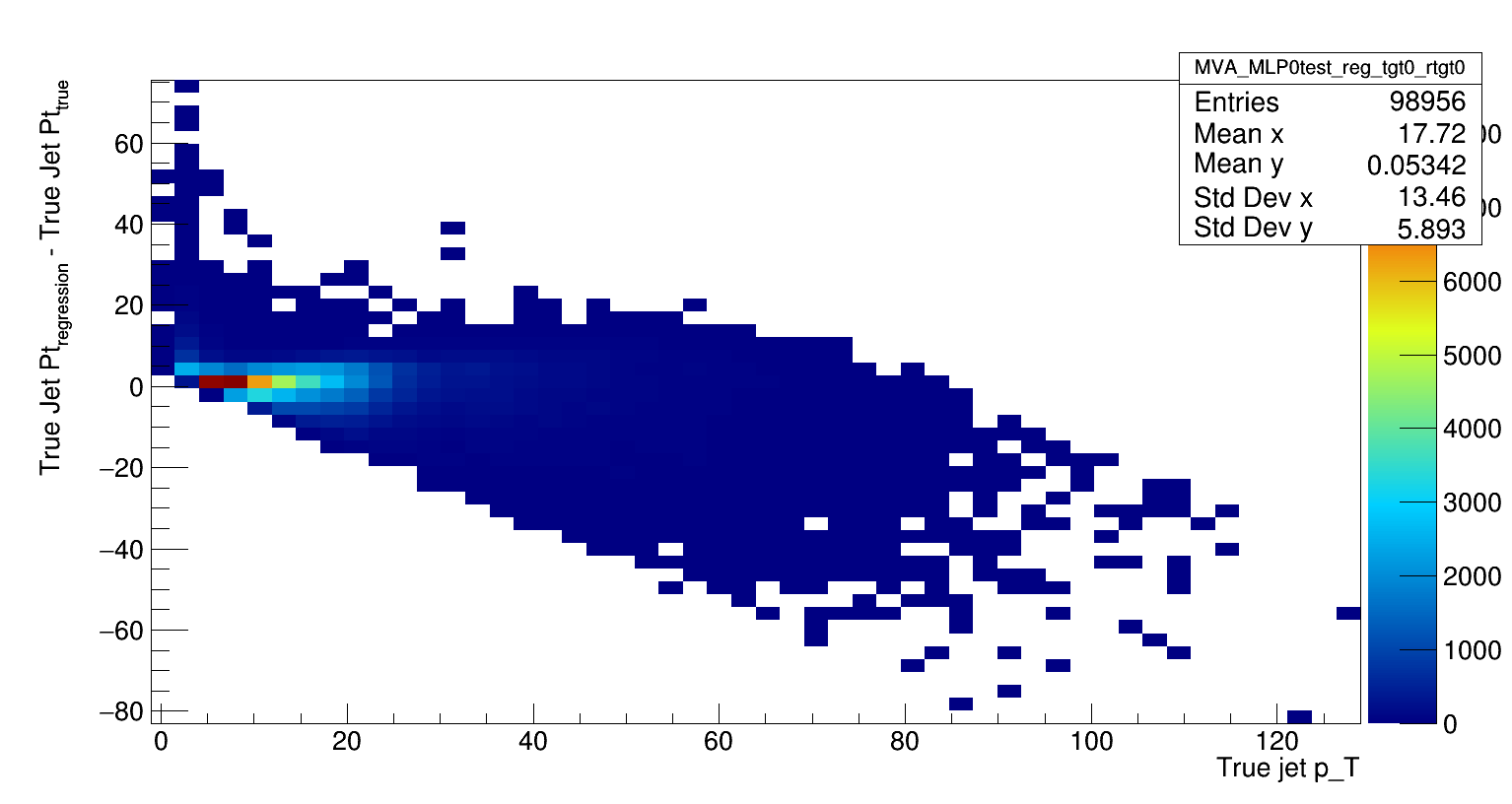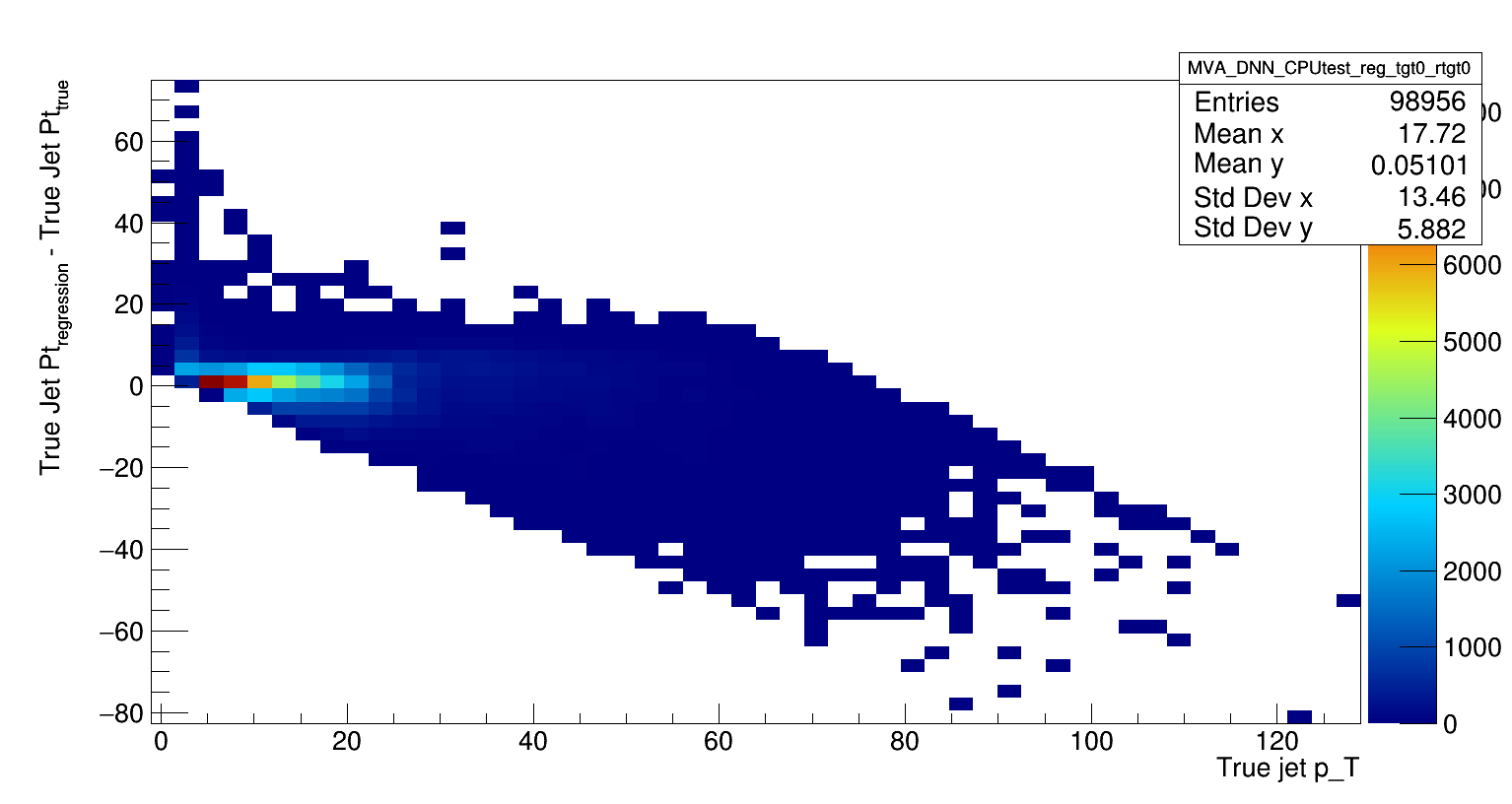Full PT Spectrum Regression with TMVA Update
This regression was done utilizing the full jet pT spectrum from Monte Carlo data without the proper weighting. There were three methods used: MLP,MLP0, DNN_CPU. The exact steps for this can be found in /star/u/rsalinas in the README file.
MLP: Multi-Layer Perceptron
MLP0: Multi-Layer Perceptron 0
DNN_CPU: Deep Neural Network Core Processing Unit
The TTrees' were created in the embedding file where detector jets were matched to particle jets in the event loop and had the following structure:
Event Loop
{
Particle loop
{
Detector loop
{
***match to particle jet***
}
tree->Fill()
}
}
tree->Write()
The embedding had to be done in partitions of different partonic pT ranges and then merged together with TTree:MergeTrees() (more info found in the README file). The merged TTree was then passed to the training phase of the TMVA regression and trained with 120000 events out of 218965 events. The rest of the events were used to test the regression. The following plot illustrate the regression with the different methods.
dJetPtMtx: Detector jets matched to particle jets
pJetPt: Particle jet Pt

From the regression plot (y axis uses the log scale), we can see that all three different methods behaved similarly and had small deviation from the pJetPt curve up until ~60 GeV/c and then begins to deviate greatly in larger pT regions. It is good to note however, that from the detector jets matched to particle jets the regression does well to remain close to the true particle jet pT spectrum.
The following are deviation plots for each method used.
MLP

MLP0

DNN_CPU

There is a lot of deviation in the low pT region which is expected due to larger amounts of events found in that region but have relative small deviations in larger pT regions and this is believed to be due to the methods requiring finer tuning or still experimenting new methods.
- rsalinas's blog
- Login or register to post comments
